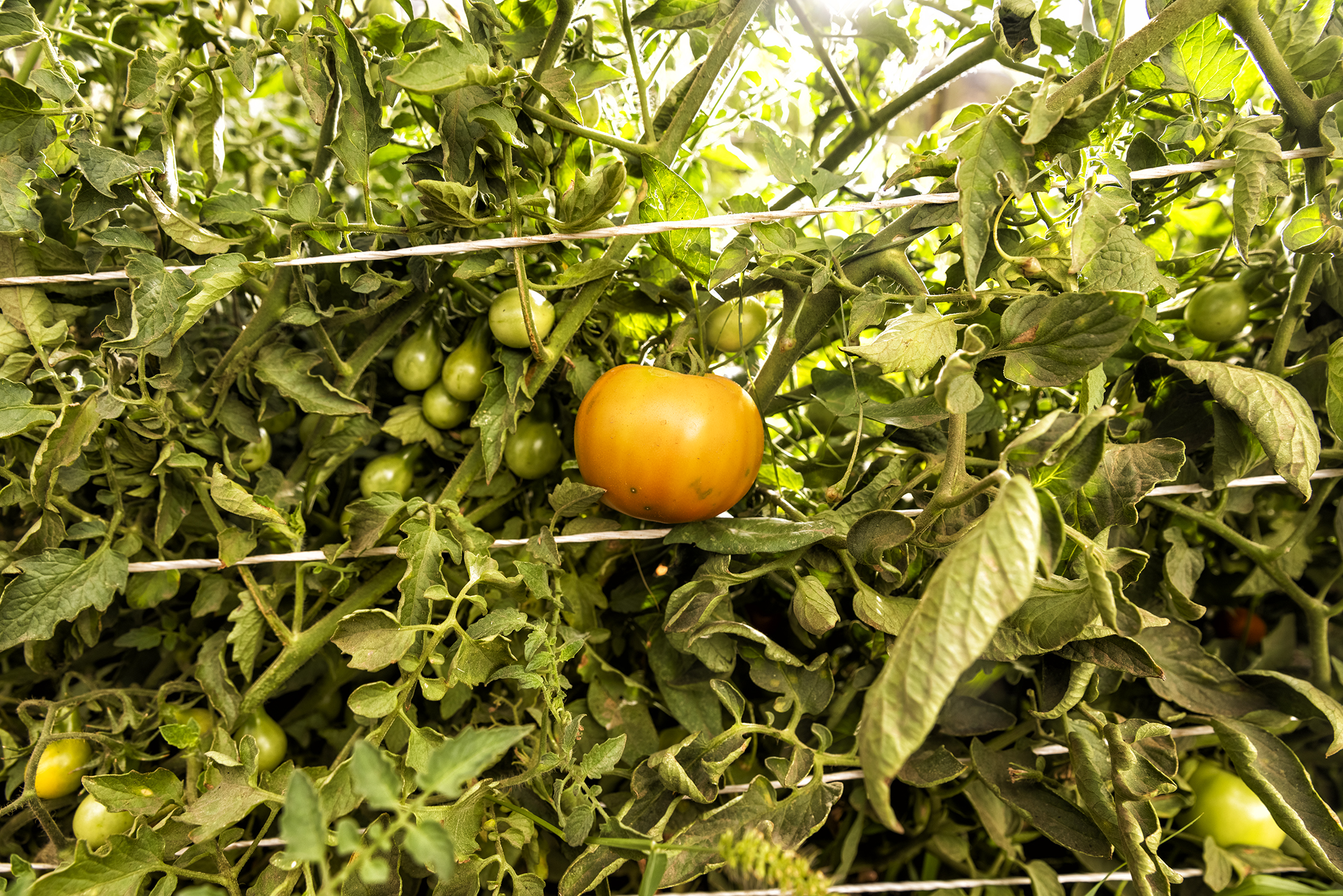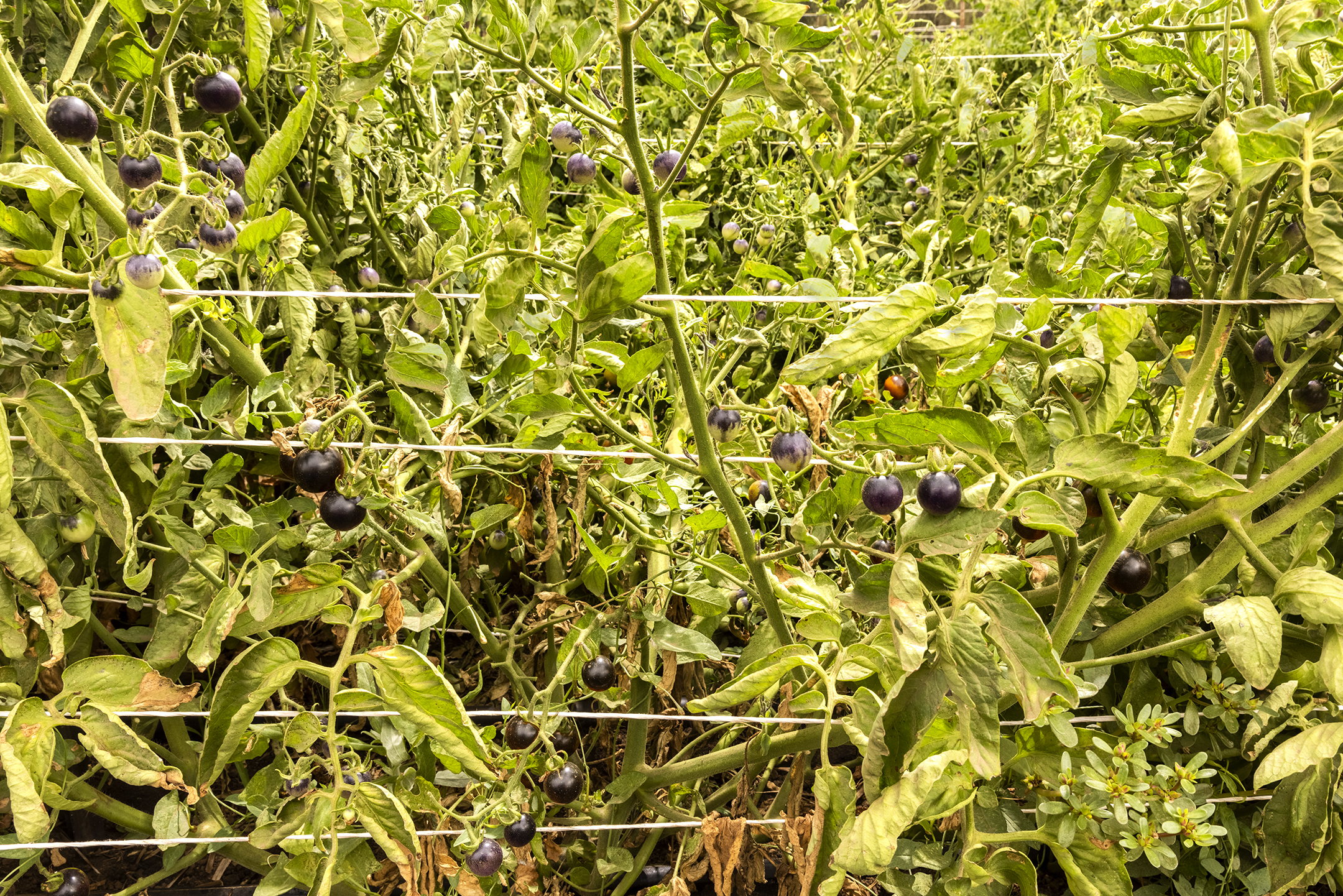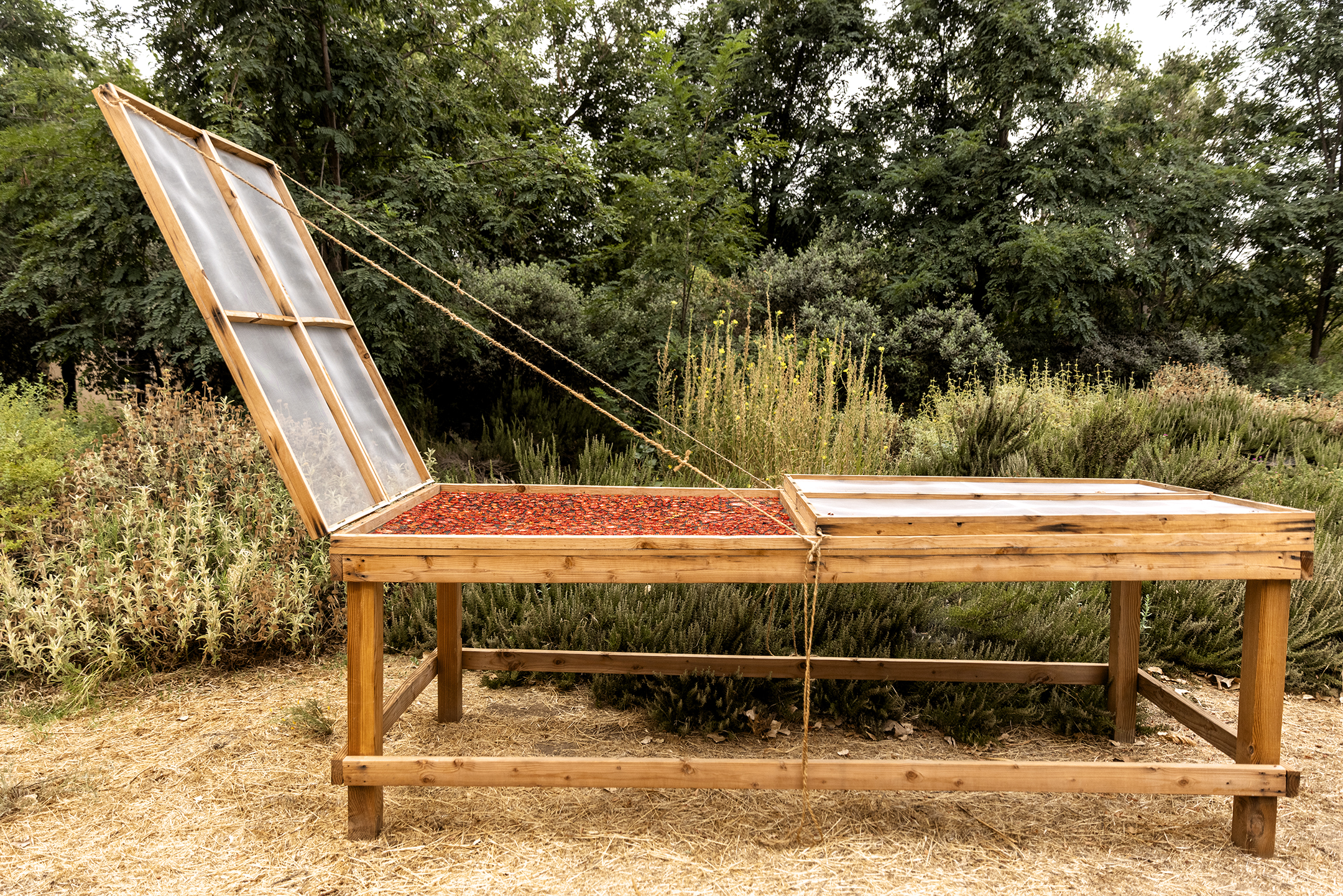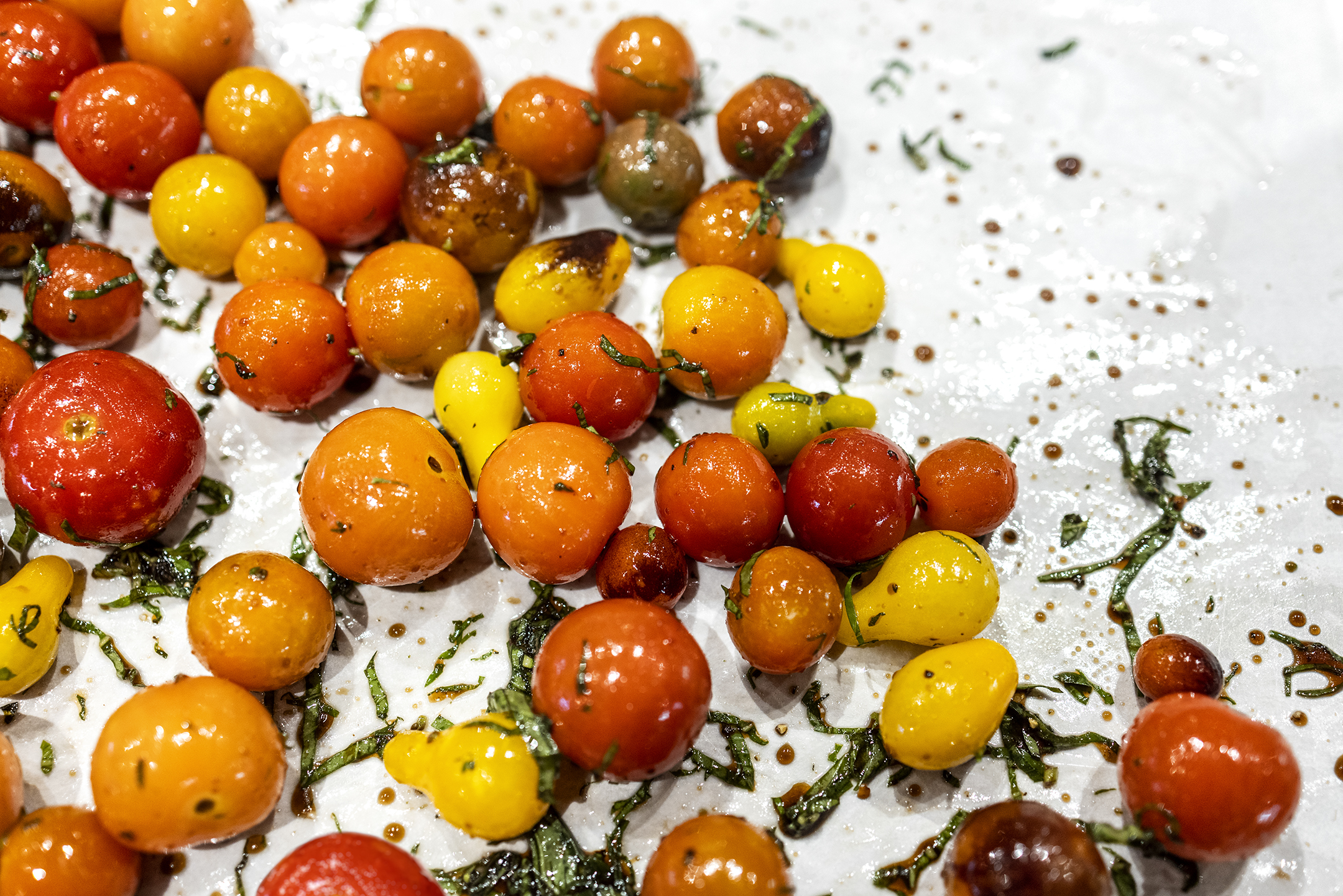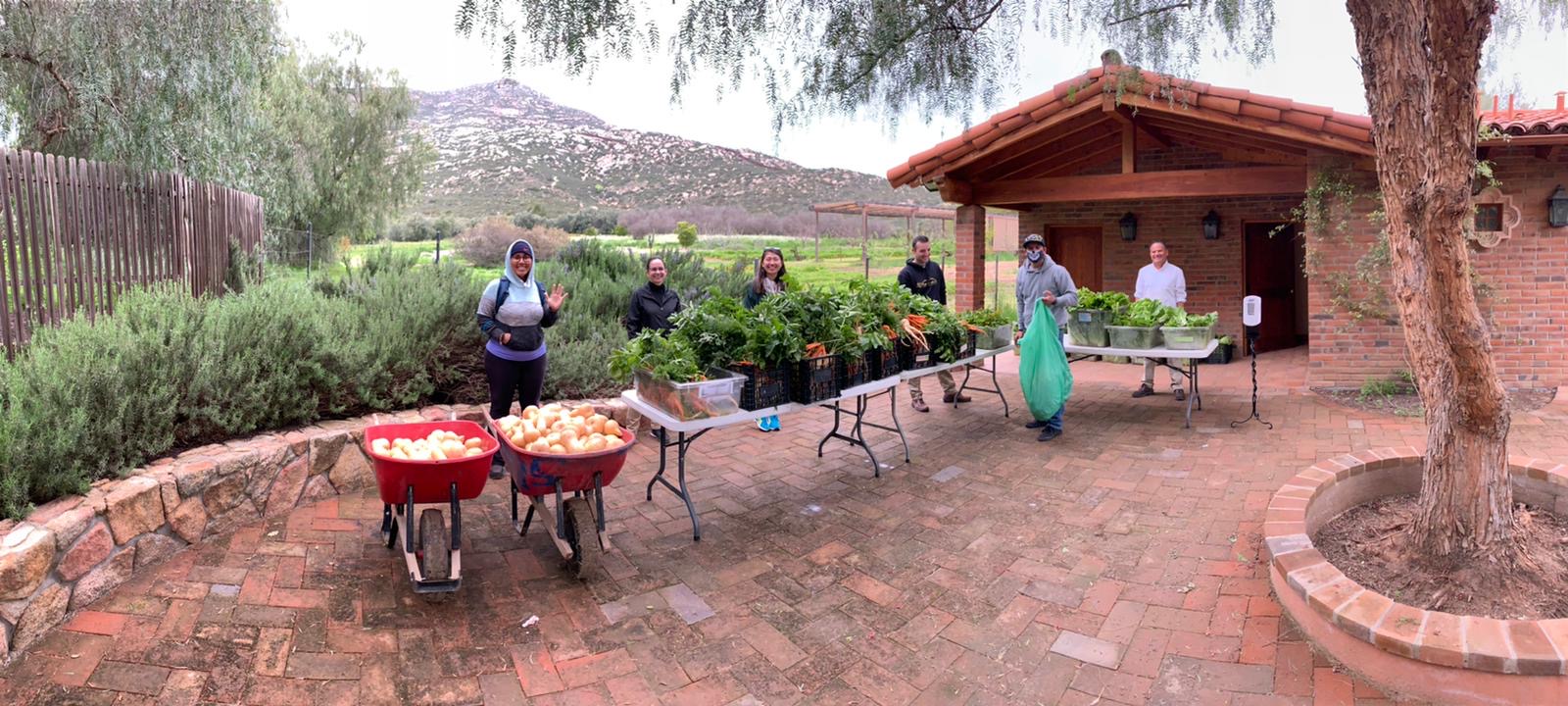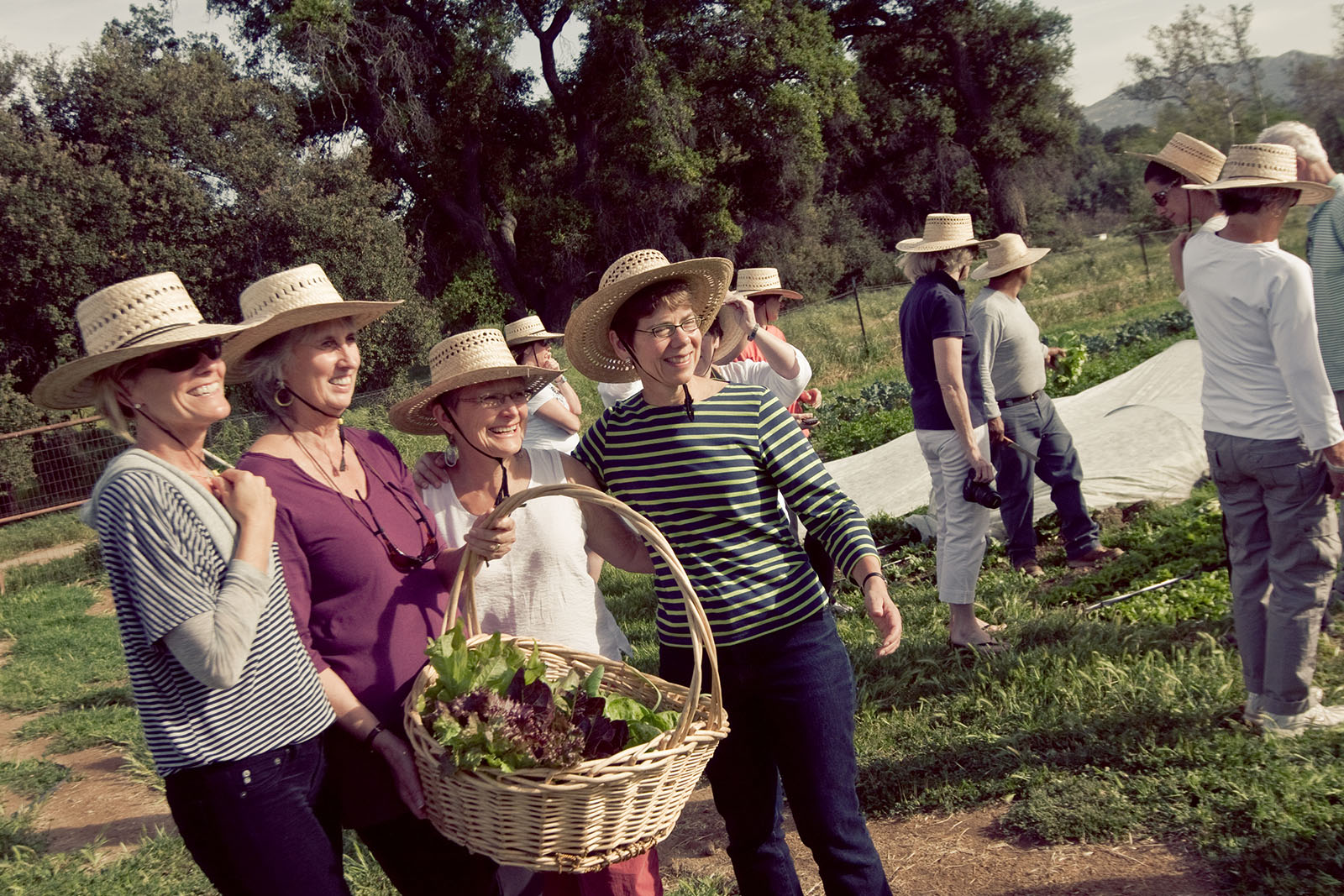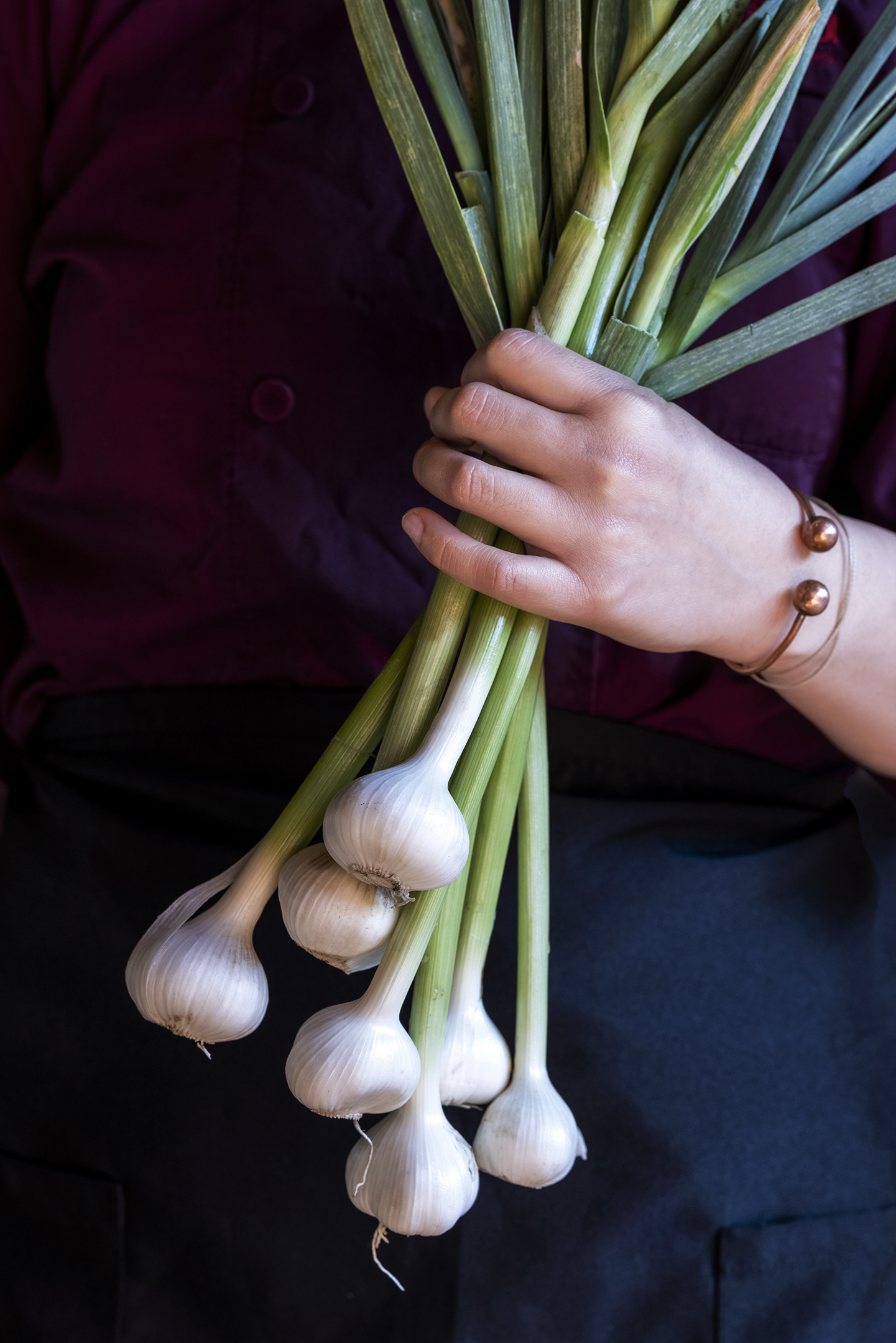Sundried and Oven Roasted Tomatoes
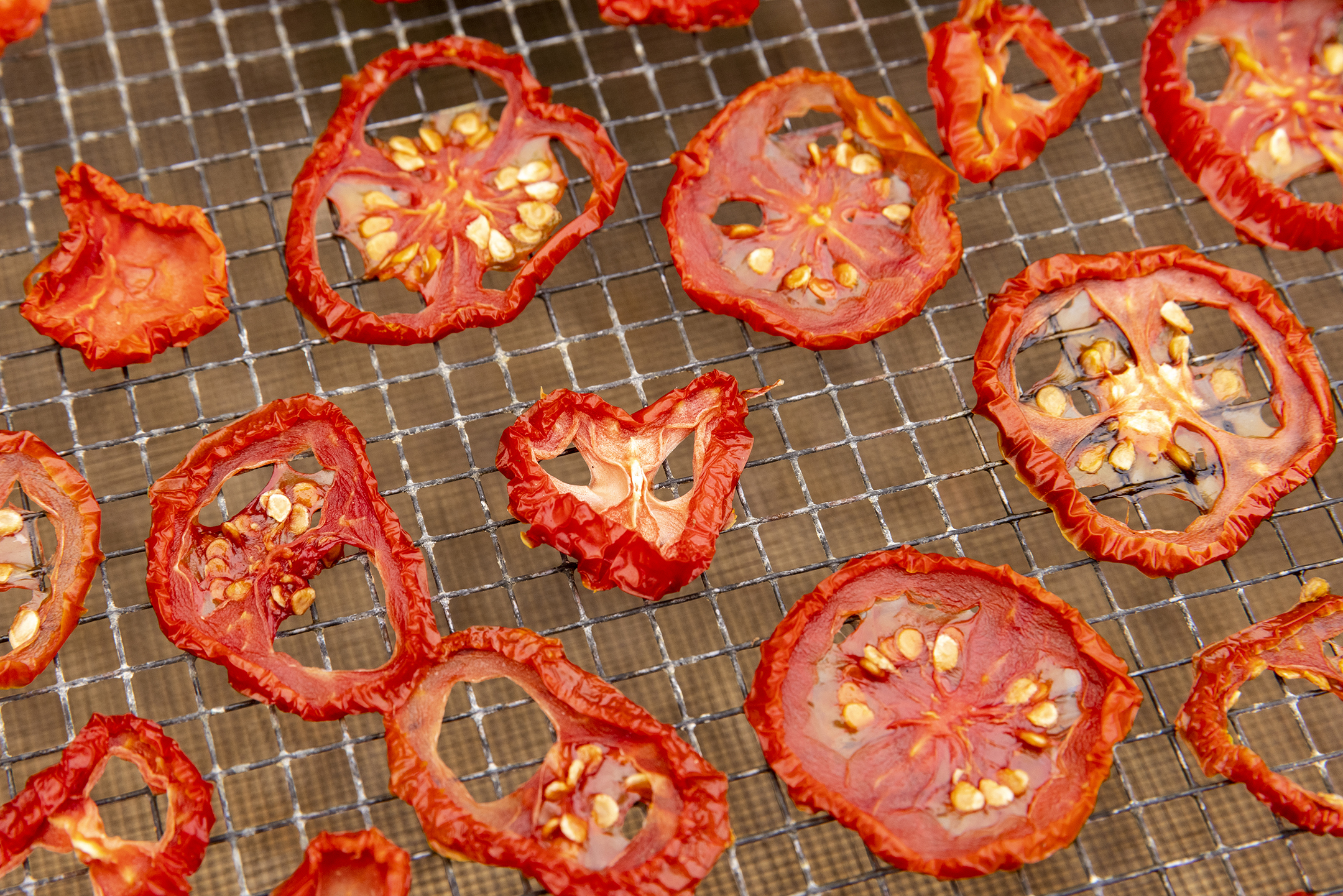
We’re lucky at Rancho La Puerta, delicious tomatoes grow for a long stretch of the summer, and this year the harvest dips into fall. Tomatoes’ Latin name, Lycopersicon esculentum, “succulent wolf peach,” gives them a wonderful sense of mystery and adventure. Native to Mexico and Central America, their culinary uses have spread faster than a Spanish galleon bobbing across the sea, taking them to Europe. In Italy, they’re pomodoro, in France and Spain they’re the tomate, and in Nahuatl of central Mexico, they’re tomatl.
Our farm Production Manager, Salvador Tinajero, recently took me on a tour and told me about Tres Estrella’s summertime abundant tomato crop.
As we walked through the farm, he told me about growing tomatoes and his favorite way to prepare them:
We have a variety of breeds here, celebrity, beefsteak, heirloom, elephant, pink, Cherokee, queen lady, green, Lebanese, so many. We grow 21 varieties. This week we harvested over 600 pounds of tomatoes plus another 150 pounds of cherry tomatoes. The chef will put them in salads, cook them down into a sauce or make our famous salsas. This morning they made tomato juice for the Organic Breakfast Hike. Heirloom tomatoes have more juice and are meatier than Roma and other types of tomatoes.
We start planting the tomatoes in the hothouse the second week of February. Next year we may begin the second week of March if the weather is crazy like this year. We usually harvest tomatoes through June and July, and early August. It’s important not to let the roots boil because it takes all the plants’ energy and is less efficient.
Tomatoes are a tough plant to grow. They like a lot of organic matter in the soil. We plant them three feet apart and stake them as they grow but we don’t prune them. The big bush plant protects the tomatoes from the sun. They usually prune the plant along the coast, so they get more sunlight and are more efficient. Here we don’t prune.
As far as watering, it depends on the weather of course. A dry, hot week, and we may need to water every day. If it’s cool in the morning and a little cloudy, we can water every other day. The plants will show you. They tell you when they need water. The leaves get stressed and curl a little, and you know they need water. The roots are deep, and the soil can hold water for a few days. The unpruned plants shade the ground too and keep it cooler and slow evaporation.
We also harvest the tomatoes from the best producers for the seeds. We have four or five varieties we are using from our own seed. The others we buy from a seed store.
We grow five rows of tomatoes then one row of basil. We plant it along the sides. Basil is good friends with tomatoes for growing and cooking.
The Roma tomatoes are good for dehydrating. We wash them and store them, and they’ll last for months. We’ll have these sundried tomatoes stored, and they’ll last until wintertime. We dry many herbs and tomatoes, but the weather this year is different from last year. We may be able to dehydrate the tomatoes in the sun till the end of September.
To make sundried tomatoes. We slice the tomatoes, maybe 3/8’s an inch. We place them on drying racks for a day, then turn them over. Depending on the weather, the slices will dry from one day to three. We turn them over in the morning when it’s moist out. Later as they heat up, they’ll become sticky.
Salvador also told me the Oven Roasted Cherry Tomatoes at the Organic Breakfast Hike are one of his favorite ways to prepare and eat them. They’re easy to make and pack a wallop of flavor.
2 tablespoons olive oil
2 tablespoons balsamic vinegar
Coarse sea salt
Black pepper
½ cup fresh chopped basil
- Preheat the oven to 350º
- Line a baking sheet with parchment paper and add the tomatoes.
- Drizzle the olive oil and vinegar then sprinkle with sea salt and a few twists of fresh pepper.
- Add the chopped basil and mix.
- Place in the oven for five minutes then test. If you like them more tender leave them for another five.
- Let cool and serve.
Buen Provecho.
Make these amazing roasted olives to go along with the tomatoes or learn more about our amazing farmers.
